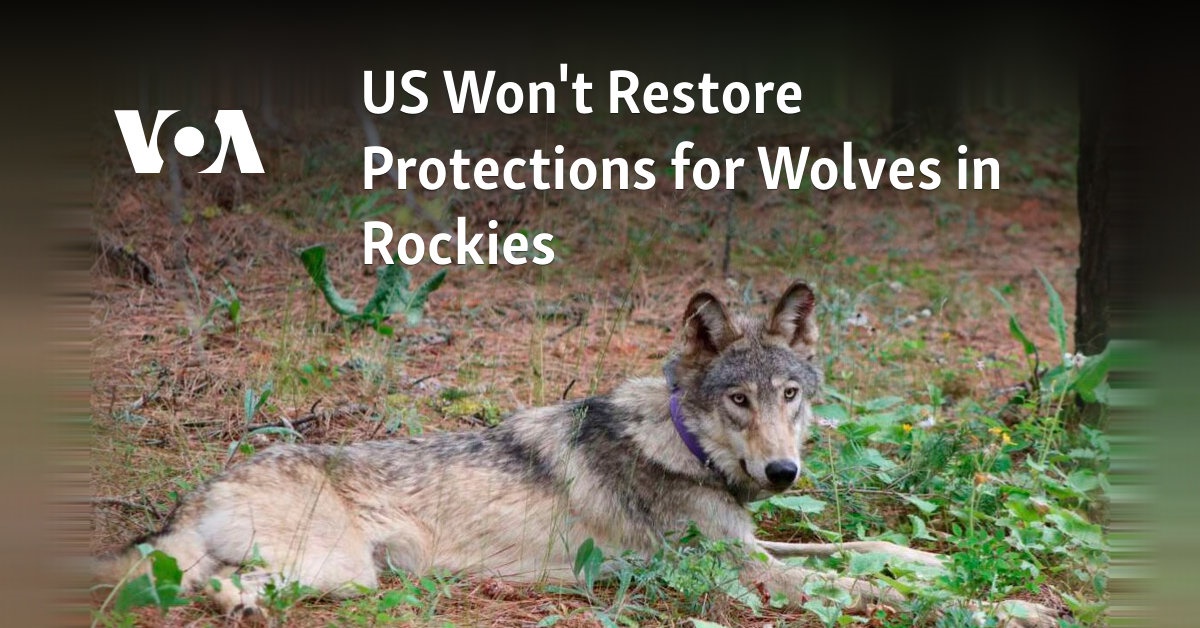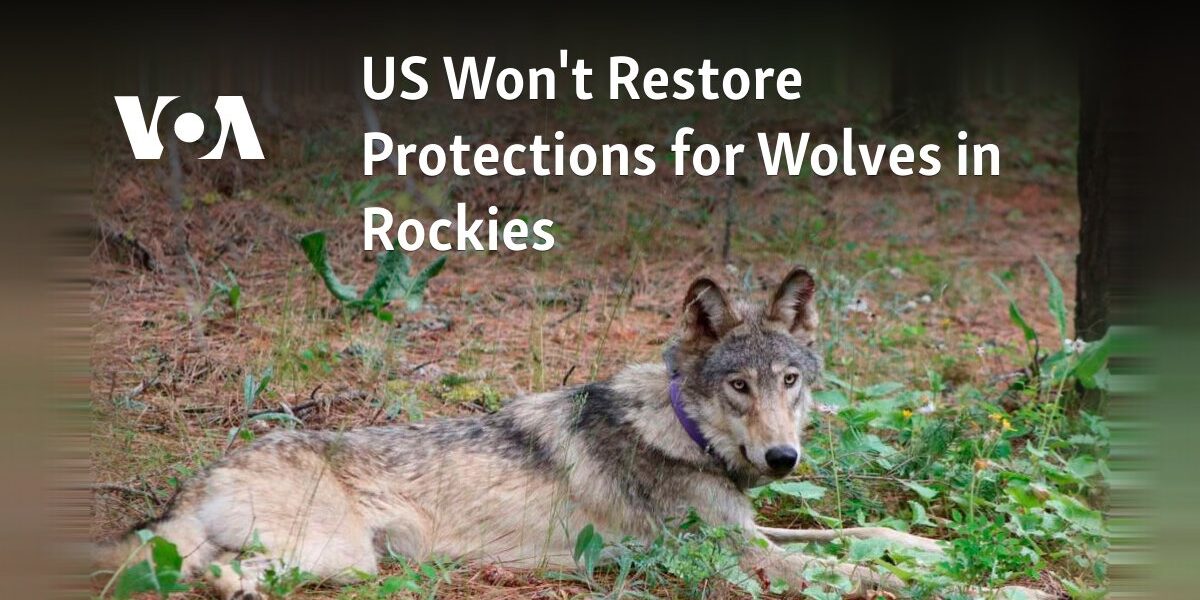
The US government has declined to grant conservation groups’ appeals to reinstate safeguards for gray wolves in the northern Rocky Mountains. Officials claim that the wolves are not at risk of disappearing, despite some states attempting to control their population through hunting.
The U.S. Fish and Wildlife Service announced their plans to develop a national recovery strategy for wolves, marking their first-ever attempt at a comprehensive approach. This comes after their previous strategy of focusing on individual regions. The agency aims to have the plan completed by December 2025.
Conservation groups’ requests have been denied, meaning that wolf hunts can continue in Idaho, Montana, and Wyoming with state approval. Government authorities have calculated that the population of wolves in the area, which also encompasses Washington, California, and Oregon, was approximately 2,800 animals by the end of 2022.
According to a statement from the agency, the population has a strong genetic diversity and connectivity, which will help them adapt to any future changes.
Environmentalists argue that despite making a comeback from near extinction in the past century, wolves are still at risk. They strongly criticize the recent decision made by Idaho and Montana to implement more aggressive methods of killing wolves, such as trapping, snaring, and extended hunting seasons.
“The Endangered Species Coalition’s executive director, Susan Holmes, expressed disappointment in the U.S. Fish and Wildlife Service’s decision to not hold states responsible for upholding their wolf conservation promises from ten years ago.”
Negative feelings towards wolves for preying on farm animals and large game can be traced back to the early days of European colonization in the American West during the 1800s. These sentiments resurfaced when wolf populations increased due to federal protection. However, this revival has faced strong opposition from hunters and farmers who are upset about wolf attacks on their livestock and big game herds. They argue that continued protections are unnecessary.
In 2011, the Endangered Species Act safeguards for wolves in the Northern Rockies were removed by Congress.
In 2020, the Trump administration eliminated safeguards for wolves under the Endangered Species Act in the rest of the United States before the end of the Republican’s term. However, a federal judge in 2022 reinstated these protections for areas outside of the Northern Rockies.
Following the announcement made on Friday, the chairman of the House Natural Resources Committee, who is a Republican, urged the wildlife service to remove any remaining safeguards for gray wolves.
Rep. Bruce Westerman of Arkansas stated that it is evident that the gray wolf has successfully repopulated and should now be managed by the states. He believes that the federal government should no longer be involved in this matter.
The management of wolves is currently under the control of the state in Idaho, Montana, Wyoming, and parts of Oregon, Washington, and Utah.
Legislators in Montana and Idaho are determined to decrease the number of wolf packs, as they are seen as responsible for occasional livestock attacks and decreasing the populations of elk and deer, which are highly valued by hunters.
In recent months, Republican governors of several states have approved new laws that broaden the circumstances, locations, and methods in which wolves can be hunted. This has caused concern among Democrats, former wildlife experts, and activist organizations, who fear that the increased hunting could greatly diminish wolf populations to a point where they cannot be maintained.
Although facing hunting pressure in certain states, wolves in the Northern Rockies have persisted in spreading to previously unoccupied regions in Washington, Oregon, California, and Colorado. In accordance with a 2020 ballot initiative, Colorado also recently initiated the reintroduction of wolves to additional areas of the state.
Political pressure persists to eliminate safeguards for wolves in the western Great Lakes area. During a short period of time when safeguards were lifted during the Trump administration, hunters in Wisconsin utilized hounds and trappers to greatly exceed the state’s harvest quota and resulted in killing almost double the intended number.
Source: voanews.com




